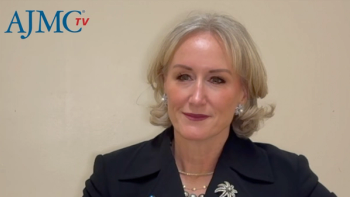
JAMA Essay Highlights Why Medicaid Proved Hard to Cut
Two Harvard health experts take an in-depth look at who benefits from Medicaid: children and the elderly consume the vast majority of the dollars spent.
For many senators, the showdown over the Affordable Care Act (ACA) turned on one thing: what would become of Medicaid, which was created to serve the poor and had grown to serve some 77 million people?
Senator Susan Collins of Maine, one of 3 Republicans who voted against the plan to repeal the ACA, was not shy in
How did Medicaid suddenly gain fans, including among Repubicans? A pair of authors examined that question Tuesday in an editorial in JAMA, in large part by digging into the data to show where the money for Medicaid goes.
Two things stand out: the sheer numbers of people now covered thanks to Medicaid expansion, and the vulnerable nature of the people who consume the lion’s share of the dollars, according to Benjamin D. Sommers MD, PhD, of Harvard’s T.H. Chan School of Public Health and Brigham and Women’s Hospital, and David C. Grabowksi, PhD, of the Department of Health Care Policy at Harvard Medical School.
The combination creates important constituencies—and potential embarrassment for lawmakers if they cut off funding for children and families who hardly fit the stereotype of “able-bodied” people unwilling to care for themselves.
The 2 groups who account for most Medicaid spending are children and the elderly, the authors point out. All children in families below the poverty line have been covered since 1984 thanks to the Children’s Health Insurance Program (CHIP), and many near-poor children were added in 1997. In some cases, Medicaid also pays for services for children with severe illnesses or disabilities in families that are not poor, but whose resources would be exhausted if they had to pay for the care that private insurance would not cover.
At the other end are the elderly and older disabled people, who qualify based on lack of income and their functional limitations. Sommers and Grabowski note that while this group only accounts for one-fourth of Medicaid recipients, they consume two-thirds of the spending, including $158 billion in long-term care services in 2015. The ACA also set in motion efforts to better coordinate services form Medicaid and Medicare for those elderly who receive both.
The prospect of Medicaid being converted to block grants set off a wave of reaction in the states, which would have to balance budgets reflecting the cuts. On Tuesday, Ohio state senators voted to
And in Mississippi, a state where the federal government pays 75% of the Medicaid budget, lawmakers scrutinizing the
Last week, an examination of
“Despite some political rhetoric to the contrary, a growing body of evidence indicates that the Medicaid program significantly improves access to care and well-being, with some studies also showing a reduction in mortality after expansion,” Sommers and Grabowski wrote. “The Medicaid program remains quite popular, among beneficiaries and the public.”
Reference
Sommers BD, Grabowski DC. What is Medicaid? More than meets the eye. JAMA. 2017; 318(8):695-696.
Newsletter
Stay ahead of policy, cost, and value—subscribe to AJMC for expert insights at the intersection of clinical care and health economics.












































